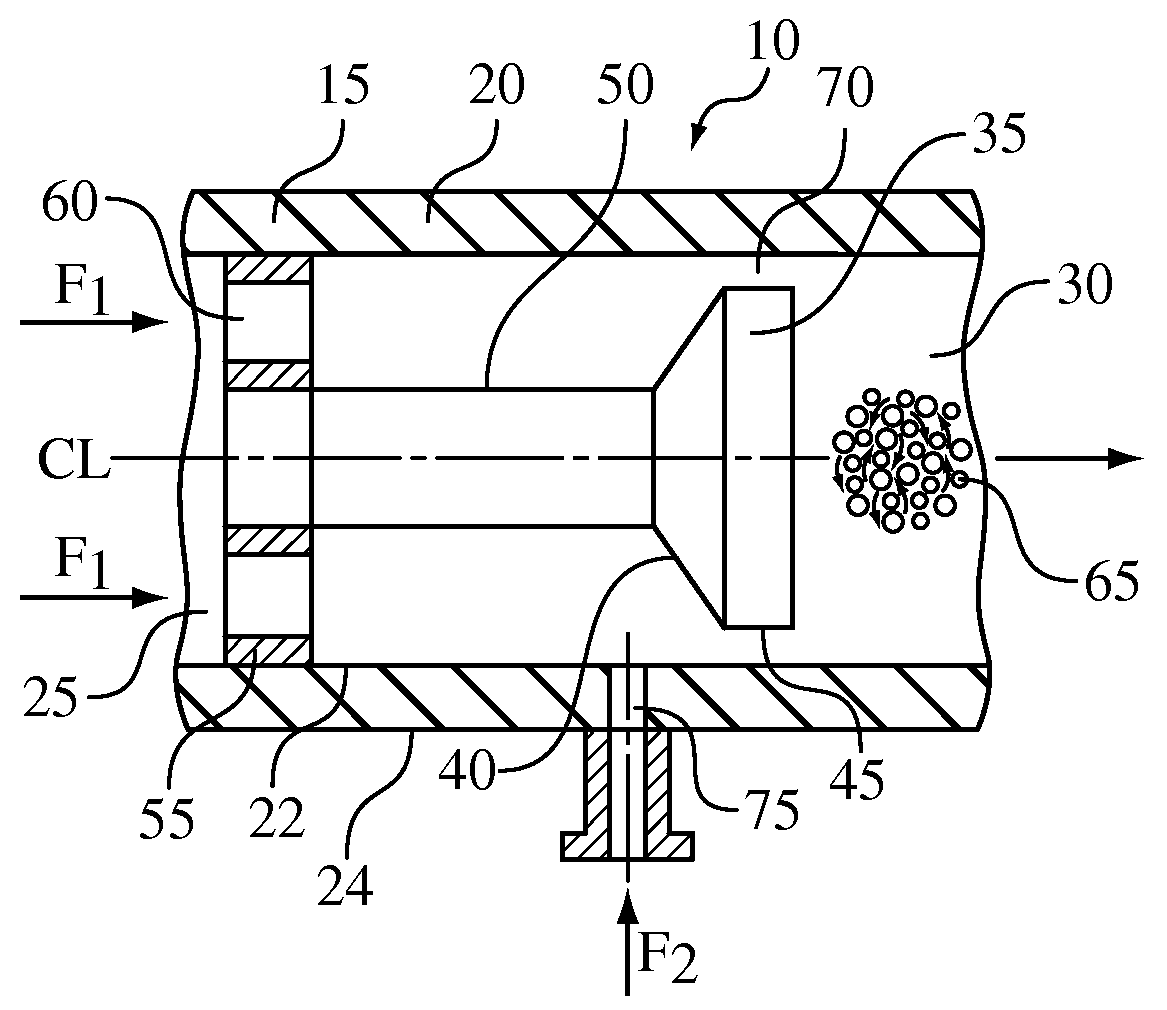Hydrodynamic cavitation crystallization device and process
a technology of hydrodynamic cavitation and crystallization device, which is applied in the direction of vibration crystallization, crystallization auxiliary selection, separation process, etc., can solve the problems of low purity of materials, reduced stability, and high friability
- Summary
- Abstract
- Description
- Claims
- Application Information
AI Technical Summary
Problems solved by technology
Method used
Image
Examples
example 1
[0062]30 grams of technical grade NaCl (sodium chloride)-(feed solution) was dissolved into 100 ml of distilled water in a beaker. 200 ml of ethanol (antisolvent) (95% ethanol+5% methanol, Aldrick™) was added to the beaker with a volumetric ratio of anti-solvent / feeding solution=2:1.
[0063]The solution was mixed until NaCl (sodium chloride) crystals appeared. Upon completion, the product was filtered, washed, and then dried. The crystal particle size (d 90) was 150 microns.
example 2
[0064]The crystallization process was carried out in a cavitation device substantially similar to the device 400 illustrated in FIG. 4 and described above. The cavitation device included a single orifice having a diameter of 0.010 inches and was capable of operating at pressures up to 8,000 psi with a nominal flow rate of up to 800 ml / min.
[0065]Ethanol (anti-solvent) was fed at 600 psi, via a high pressure pump, through the flow-through channel, while NaCl (feed solution) was introduced at 600 psi, via a high pressure pump, into flow-through channel via a port positioned upstream from the orifice at a 2:1 anti-solvent / feed solution ratio. The combined anti-solvent and feeding solution then passed through the orifice causing hydrodynamic cavitation to effect nucleation. NaCl was crystallized and discharged from cavitation device. The resultant crystal particle size (d 90) of the recovered crystalline NaCl was 30 microns.
example 3
[0066]The crystallization process of Example 2 was repeated in the cavitation device 400, but at a higher hydrodynamic pressure of 3,000 psi. The resultant crystal particle size (d 90) was 20 microns.
PUM
| Property | Measurement | Unit |
|---|---|---|
| temperature | aaaaa | aaaaa |
| crystal particle size | aaaaa | aaaaa |
| flow rate | aaaaa | aaaaa |
Abstract
Description
Claims
Application Information
 Login to View More
Login to View More - R&D
- Intellectual Property
- Life Sciences
- Materials
- Tech Scout
- Unparalleled Data Quality
- Higher Quality Content
- 60% Fewer Hallucinations
Browse by: Latest US Patents, China's latest patents, Technical Efficacy Thesaurus, Application Domain, Technology Topic, Popular Technical Reports.
© 2025 PatSnap. All rights reserved.Legal|Privacy policy|Modern Slavery Act Transparency Statement|Sitemap|About US| Contact US: help@patsnap.com



